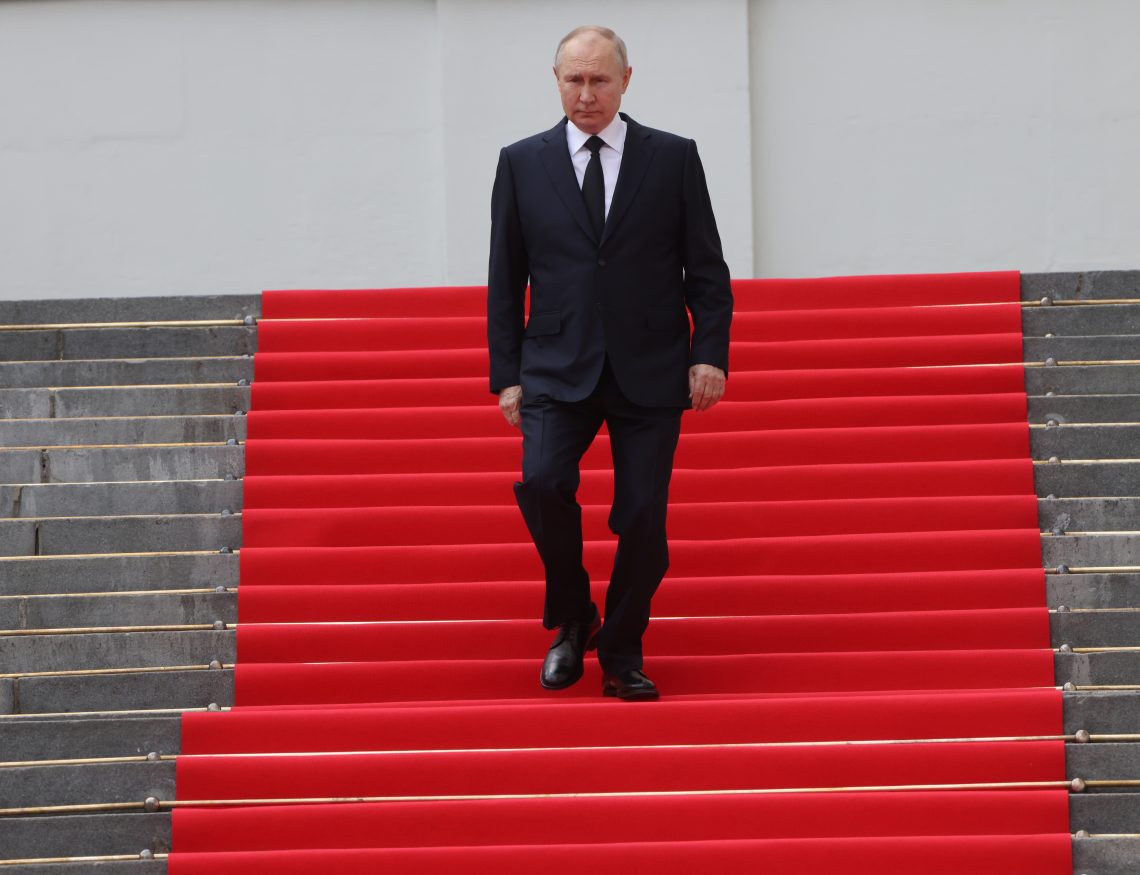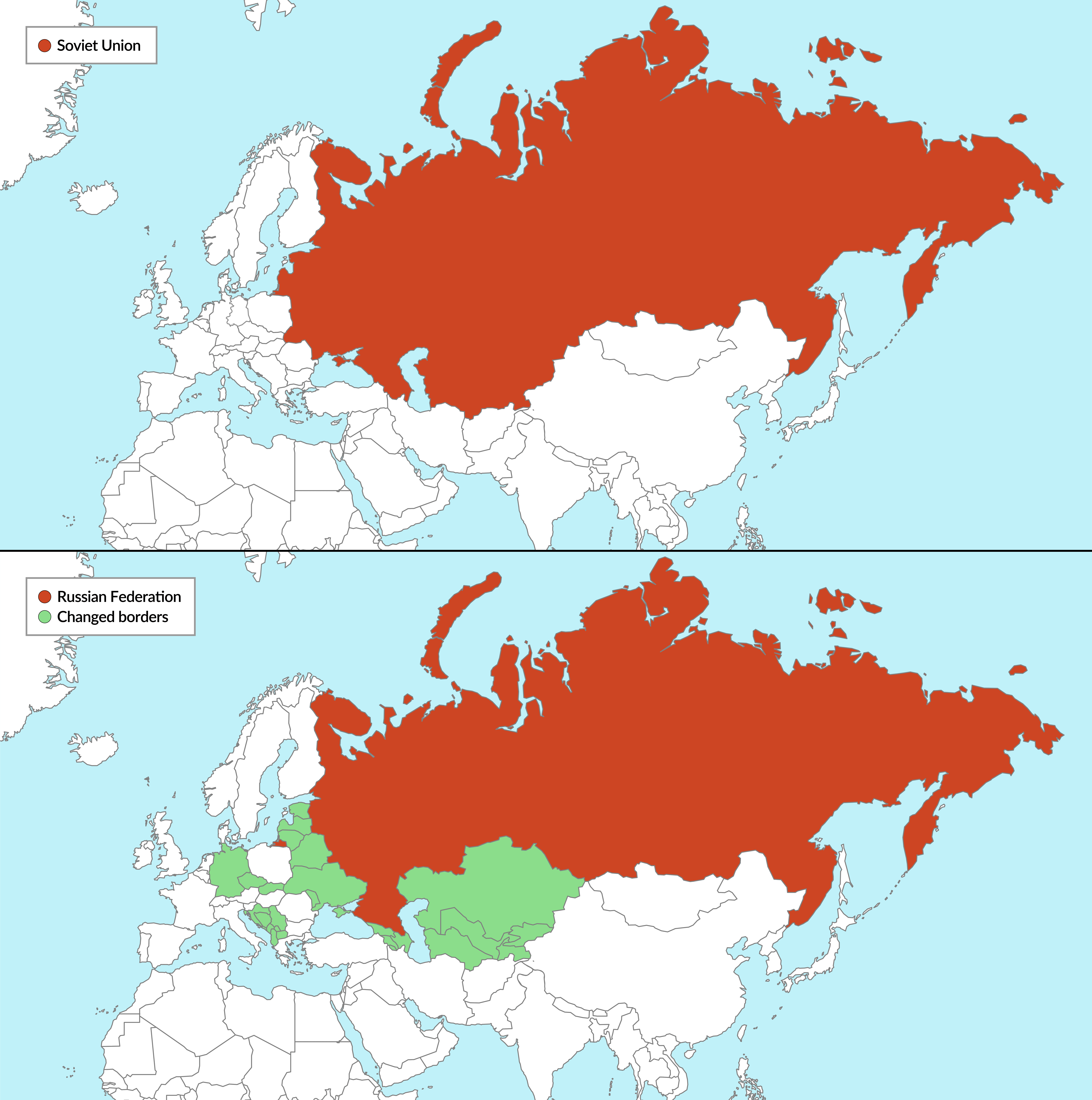Could Russia disintegrate?
Expectations that June’s revolt would lead to a regime change were misplaced. Instead, the Russian state will enter a phase of slow decay.

In a nutshell
- Challenges to the Kremlin usually precede decade-long upheavals
- Putin’s ‘empire’ is plagued by economic and ethnic tensions
- Foreign influence will have little effect on this internal decay
The real stakes in Russia’s war against Ukraine are not only the fate of Ukraine but also the future character and borders of the Russian state. This became particularly evident during the recent mutiny of Wagner group leader Yevgeny Prigozhin, which marked the first serious rebellion in President Vladimir Putin’s inner circle and one of many new developments in Russia’s internal situation that could acquire significance as stages in a long-term “disintegration” scenario.
Gapon effect
A forgotten but significant figure in the history of Russia is Georgy Gapon, the Orthodox priest who led the St. Petersburg workers’ protests in January 1905. Gapon was not just a revolutionary and people’s tribune – today we know he played a double game, secretly working with tsarist officials and the secret police. Gapon, like Mr. Prigozhin, hardly resembles the image of a good revolutionary. Yet it was his activity more than any other that led to Bloody Sunday, which sparked the 1905 Revolution and started the collapse of a great empire. At the core of that revolution was the “desacralization of the Tsar” and the ambiguous role played by Gapon himself, who was both a rebel and collaborator. The same may be true of Prigozhin.
The chief result of Mr. Prigozhin’s rebellion was to desacralize Mr. Putin’s rule, even if the march was aborted 200 kilometers away from the capital. Gapon was finally murdered by the secret police, and Mr. Prigozhin was likely to meet a similar end. It is probable that the plane crash in which he reportedly died was arranged by close associates of President Putin. Nevertheless, for Russia, his strange rebellion was a serious test. It exposed the weakness of the Russian president and the authoritarian system he built, revealing hidden fractures in the highest circle of power. In Russian history, waves of change have traditionally been triggered when people perceive the ruler as failing to lead or showing fear – thereby stripping him of his “holy” status. And as Wagner troops approached Moscow, no one was seen rushing to save Mr. Putin. To save face and scare off other potential rebels, the Russian leader had to arrange a theatrical demise for Mr. Prigozhin and his allies. But the desperate gesture could also be interpreted as a sign of weakness by Mr. Putin’s enemies.
Processes of decay
The disintegration of the tsarist empire came after a 15-year process of decay, lasting from the early years of the 20th century until the victory of the October Revolution. Tsarist Russia lagged economically behind other empires of the era, which undermined its authority just as Russia was subjected to the pressure of a war with Japan. After the outbreak of revolution and then a decade of failed political and economic reform, World War I, and the revolutions of 1917 – February and October – completed the demise of the empire. The long process of decay that ended in 1918 consisted of three major revolutionary outbreaks, each preceded by a strike wave, army mutinies, two lost wars and secession movements in various parts of the empire. But the key moment was 1905, which opened the way for change by exposing the tsar’s weakness and forcing him to accept the first limitations on his power.
Facts & figures
States whose borders changed during and after the collapse of the Soviet Union

On the ruins of Romanov Russia, the Soviet Union was created in 1922 – another incarnation of Russian imperialism. The USSR’s development clearly diverged from the great powers of the West, which even as they modernized were painfully relinquishing the imperial idea. Great Britain, for example, for decades waged a doomed war against Hindu nationalism, while France fought Algerian and Vietnamese aspirations for independence, but each of these empires was eventually forced to give up their imperial pretensions and chart a new course. Meanwhile, under the banner of Marxist ideology, the Soviet Union was subjugating its numerous constituent nations, including the Russian Federation itself. This fed further imperial expansion, which reached unprecedented proportions in the aftermath of World War II. At its zenith, Soviet power recouped Russia’s territorial losses of 1921 while adding a new gallery of satellite states. This enlarged realm survived until 1991, even as every other land and sea-based colonial empire collapsed. At the same time, however, Russia became an open-air museum of obsolete technologies.
The verdict of history caught up with Moscow at the end of the 1980s. The last Soviet leader, Mikhail Gorbachev, tried reform, but his attempts only accelerated economic decay and encouraged the aspirations of captive nations. The advent of Gorbachev’s perestroika in 1985 started the collapse of Russia’s second empire, with the Soviet Union’s 15 component republics declaring independence in 1991. Even that, however, did not put a definitive end to the empire, as the Russian Federation itself survived as a mix of many nations and formally autonomous territories.
Chechen template
One of the latter, Chechnya, a North Caucasus region inhabited mostly by Muslim Chechens, declared its independence in 1993. Under pressure from his entourage, President Boris Yeltsin sent Russian federal troops to the rebellious republic in 1994. This violated earlier agreements with the local authorities and led to a protracted war and mass exodus of refugees to the West. Chechnya’s bloody pacification halted the Soviet Union’s disintegration. The Russian Federation was preserved, but at the cost of ending Russia’s experiment with democracy and free markets.
Chechnya provided a template for President Putin, who succeeded Mr. Yeltsin in 2000. He decided to rebuild a third Russian empire under his personal control, using the Soviet inheritance as a model. The polity he created evolved from an authoritarian into a semi-totalitarian state. In the ideological sense, it bundled elements of Tsarist Russian and Soviet tradition. Economically, it depended on exporting natural resources (mainly hydrocarbons) with income streams controlled by a political-military oligarchy largely composed of former members of the security services. Mr. Putin’s third incarnation of the Russian empire rested on the political and economic domination of nations that had historically been exploited by Moscow. This was the message behind Russia’s military aggression against Georgia and Ukraine.
President Putin’s invasion of Ukraine in February 2022 bet everything on one card. If he conquered Ukraine, he would stop the country’s Westernization and absorb it into a new confederation with Belarus and the Russian Federation. The failure of Russia’s military to take Kyiv in March 2022 and the mass murder of Ukrainian civilians near the capital scuttled this empire-building project, dashing any illusions of welding Ukraine into a common state organism with Russia and imperiling President Putin’s own legitimacy to rule in Moscow.
Turbulence ahead
Mr. Prigozhin’s rebellion was just one symptom of a deeper malaise revealed by President Putin’s frustrated imperial push into Ukraine. Russia is entering a prolonged period of turbulence that could lead to further disintegration of its empire, strip Moscow of influence over the post-Soviet sphere, and decolonize the relationship between Russians and non-Russians within the Russian Federation.
Certain elements of this process of decay have long been apparent. Most obvious is the declining attractiveness of the imperial center. Being close to the Kremlin and President Putin is becoming more of a liability than a source of prestige or power. Soon after Russia’s military retreat from Kyiv, the presidents of Kazakhstan, Kyrgyzstan and even Tajikistan publicly expressed their displeasure with the Kremlin. Chechnya, a loyal member of the Russian Federation, balked at supporting Russian military mobilization, with President Ramzan Kadyrov complaining that Chechnya had already done its part. As its non-Russian proteges fall away, one can see a compensatory growth of Great Russian thinking in the Kremlin, as the ruling elite arms itself with chauvinist bravado. The new mindset can be seen in the gradual sidelining of Defense Minister Sergei Shoigu, an ethnic Tuvan, and other non-Russians from positions of influence. Military conscription continues to fall most heavily on residents of Russia’s poor and outlying regions, usually of non-Russian ethnicity.
An old hallmark of Soviet decline – technological backwardness – is also making a comeback. The reimposition of Western sanctions has revealed Russia’s dependence on the outside world and its inability to make do without imported Western technologies. Like the Soviet Union, Russia can make money from oil and gas but finds itself helpless to produce microprocessors. A growing sense of vulnerability creates friction in the ruling camp and encourages infighting among rival interest groups fearful for the empire’s future. Russia’s rulers’ traditional response to such tensions has traditionally been small wars on the imperial borderlands to show that autocratic control remains essential.
Scenarios
Sudden collapse
The most obvious ripple effects of Mr. Prigozhin’s putsch might be expected at the front, where it was far from the only expression of discontent. Numerous examples of the Russian army’s deteriorating morale have surfaced in recent weeks. Most notably, the commander of the 58th Combined Arms Army, General Ivan Popov, responsible for holding a key stretch of front in Zaporizhzhia Oblast, was sacked after criticizing the tactics of the Russian high command. General Sergei Surovikin, deputy commander of Russian forces in Ukraine, has meanwhile dropped out of sight and is reportedly under detention for his role in the Wagner rebellion. These and other incidents are suggestive of systematic command problems on the Russian side, which should theoretically lead to a series of defeats that could end the war. However, that has not proved to be the case.
If anything, the chances of a quick military resolution are sharply diminished despite serious trouble on the Russian side. This is primarily due to: extensive minefields and fortifications that are proving highly effective against Ukrainian forces short of specialized engineering equipment; Ukraine’s lack of air superiority and even significant air support on its main axes of attack; and Russia’s large and growing capabilities in electronic warfare. These factors have largely offset the Ukrainian army’s high morale and increasing inflows of Western equipment, indicating that the main phase of the war will not end this year. Therefore, it is possible but unlikely that the whole Prigozhin affair will accelerate military collapse.
Internal coup
Another widely entertained theory is that the Wagner putsch heralds strains within the Kremlin leadership that will eventually produce a political reshuffle. Leadership change has always been a key component of the Western plan for ending the Ukraine war, alongside a military resolution and/or a negotiated settlement. There is some justification for the view that the removal of Mr. Putin, even in favor of a more radically nationalist team, could open the way for peace talks between Moscow and Kyiv. It can safely be assumed that the Kremlin elite’s primary interest is to preserve its wealth and position, even if that involves sacrificing Mr. Putin. Russia’s marginalized status still provides the leadership group with mafia-like means of enriching itself. In this sense, there exists a paradoxical convergence of interests between members of President Putin’s entourage and Western countries who want peace talks to start immediately.
As mentioned above, President Putin’s reverses – including the recent second attack on the Kerch Straits bridge – have triggered a process of “desacralization” that makes him appear vulnerable. His silence during the early hours of the June putsch was interpreted as a further sign of weakness, much as was Nicholas II’s absence from St. Petersburg during the Bloody Sunday events of 1905. Yet only a conspiracy by the army or Mr. Putin’s immediate entourage provides any mechanism for regime change, given the extremely limited scope for any influence from outside powers, including the Western countries and China.
The prospects for President Putin’s rapid ouster have somewhat receded since June. Public expressions of support for Mr. Prigozhin’s revolt were greater than expected, but considerably less than what was needed to remove the Russian leader. At the same time, the events served as a kind of loyalty test for key members of the power elite – giving Mr. Putin a valuable snapshot of who was reliable in the power structure and who was not. The putsch also provided the Russian president with an unexpected respite from international pressure, as Western leaders took fright at the prospect of the sudden destabilization of a nuclear power. Indeed, this fear among policymakers may now be stronger than their desire for rapid peace talks.
Slow decay
The most likely outcome is a slow collapse. In this variant, nothing happens immediately. There will be no rapid military or political change as Russia’s empire simply enters the next phase of its disintegration. In this scenario, too, Mr. Prigozhin is significant, but only in the context of a long-term process.
Many factors indicate this scenario is the most probable. Some are strictly military, related to Ukraine’s slow-moving counteroffensive and the limitations of its current capabilities. In addition, the outcome of NATO’s recent Vilnius summit – especially declarations that Ukraine can hope to join the alliance only after the war ends – reinforces the likelihood of a protracted war. President Putin has every incentive to drag out the fighting to weaken Ukraine and, more importantly, to prove it is essential that he remain in office.
Simultaneously, the same internal tensions that led to Russia’s imperial collapse in previous historical periods will persist and strengthen. As the war drags on, we can expect more disputes between Moscow and the regions, along with intra-regional squabbles. There may be attempts in some regions to break free of Kremlin supervision and operate outside of the central government’s control, or at least on a much longer leash. In this case, centrifugal and separatist tendencies are likely to revive. One of the most sensitive regions with significant potential for disintegration is the South Caucasus.
This article has been archived for your research. The original version from Geopolitical Intelligence Services AG can be found here.



